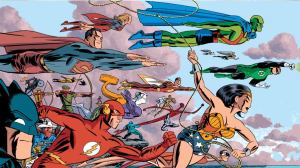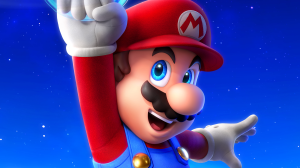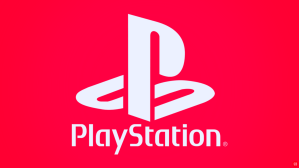The Justice League is one of the most important teams in the history of superhero comics. There’s an apocryphal story that the only reason that Marvel decided to give superheroes a try again in the early ’60s was because of the popularity of the Justice League. The Justice League is interesting, because while they aren’t exactly groundbreaking, they’ve helped make lots of ideas popular. So, for example, the Justice League isn’t the first time a publisher’s greatest heroes all banded together, but it still found a way to revolutionize the idea. Superhero multiverses weren’t invented in Justice League books, but Justice League books made them more popular, as the team crossed over the the Justice Society, the Freedom Fighters, the Shazam family, and many more.
Videos by ComicBook.com
The Justice League has starred in some excellent stories, but they are nowhere near as important as they once were. In fact, the Justice League has had such a precipitous downfall that it’s seemingly impossible for them to ever rise again. The Justice League has gone through a lot of changes, and the biggest change is how unpopular they’ve become. There are a lot of factors that have made the Justice League fall from grace, and that’s become a big problem for DC Comics.
The Justice League is Too Old-Fashioned and That’s Cursed Them

The Justice League came of age during the ’60s and ’70s. The team was the consummate Silver/Bronze Age superhero team, because it had something that even the Avengers didn’t — a roster of the all of DC’s greats in the same place. It was the equivalent of buying Superman, Batman, Wonder Woman, the Flash, Green Lantern, and Aquaman comics (not to mention other members of the team) for the price of one comic. This was a major selling point for the book for a lot of fans. Justice League stories were also the equivalent of modern event stories. The Justice League was constantly thrown into battle against the greatest enemies, and the multiversal crossovers gave readers even more heroes for their buck.
Looking back at the history of the Justice League, it’s plain to see when the first chinks appeared in the League’s armor — the Detroit League. DC decided to make a Justice League team without Superman, Batman, Wonder Woman, the Flash, and Green Lantern, instead stacking the team with B and C-list members. Suddenly, Justice League stories were no longer big stakes superhero stories; they weren’t much different from what fans were getting in something like Batman and the Outsiders. Post-Crisis DC brought in another Justice League team that was mostly B and C-list, but Justice League International was able to wow readers because it went in an entirely different direction from any other Justice League series. The Justice League International formula only started to fall apart when creators tried to use the team like a traditional Justice League team. It wouldn’t be until the mid ’90s JLA reboot that we would get a return to Silver/Bronze Age form for the Justice League, but even that wasn’t going to last.
It’s hard to identify the problem with the Justice League since the mid ’90s. Creators have kept the big spectacle coming, but their various comics haven’t really connected with readers the way the early runs of JLA did. The Justice League has had its ups and downs, but I think the biggest problem with Justice League books in the modern age are event books. Old school Justice League comics were the equivalent of a major event comic every month. The Justice League was often facing off against enemies that could endanger the heroes of more than one Earth. Nowadays, it’s basically impossible to do that sort of thing. Event books, especially DC ones, have taken a turn for the extravagant. Look at the DC event books of the 21st century; we’ve gotten multiple universe changing events, battles against Darkseid, embodiment of death Nekron, Barbatos, Perpetua, the Multiverse Who Laughs, the Great Darkness, and more. In order for old school Justice League stories to work, you’d need to pit the team against enemies who aren’t as a big deal as those event villains, but are still on a higher level than most DC villains. There’s a reason that Justice League Unlimited, DC’s latest attempt to bring the team back to prominence, immediately pit the team against the Legion of Doom; there’s no real credible threats for a team of the Justice League’s stature that aren’t in event stories. Event storytelling has killed the Justice League, and that is a massive problem for DC Comics.
The Health of the Justice League Is the Health of DC Comics

The Justice League has long defined what DC Comics is. The various volumes of Justice League comics — Justice League of America, Justice League, Justice League International, and JLA — have showed the DC Multiverse in all of its glory. When the Justice League is healthy, DC is healthy. That’s why it’s so weird that DC just can’t make Justice League comics work the way they used to. The last two DC publishing initiatives — Dawn of DC and All-In — have put out some of the best DC comics of the 21st century, and yet the Justice League isn’t the focus it should be.
Justice League Unlimited is a great title, yet even now, it’s not the focus of the big DC stories going on right now. It’s brought back some of the best ideas in Justice League history, but it’s not where it should be when it comes to fan appreciation. It’s hard to make an argument for the Justice League when around half the year is taken up by the kind of event stories that used to be exclusively Justice League stories. The irony of Justice League Unlimited is that the perfect formula to make the book work comes from the cartoon that the book is taking its name and ideas from. The cartoon Justice League Unlimited worked so well because it told character focused action spectacles. DC needs to put this formula into play in the main book, instead of the long form stories it’s had since it was relaunched in 2024. The Justice League is still the best of the best and DC can bring it back to prominence rather easily.
What do you think about the Justice League’s fate? Sound off in the comments below.









